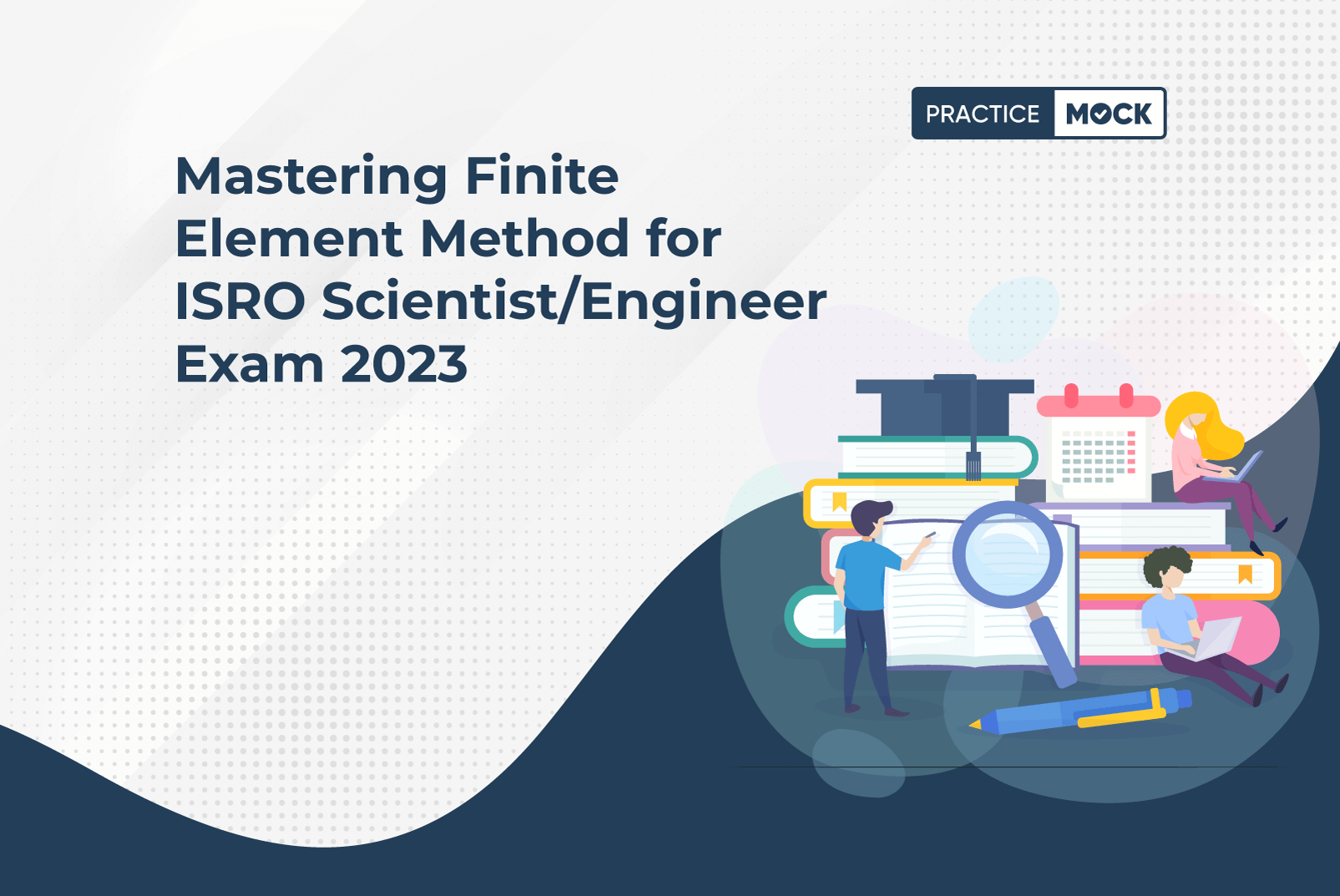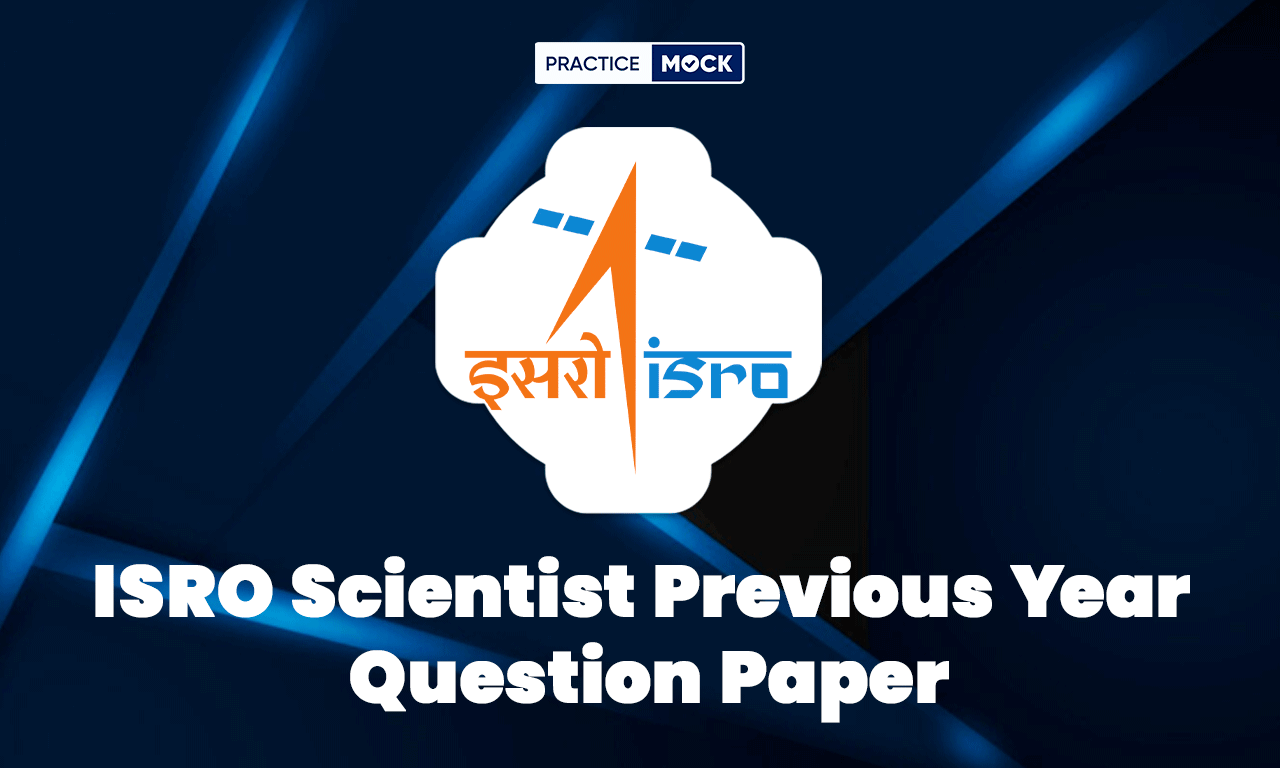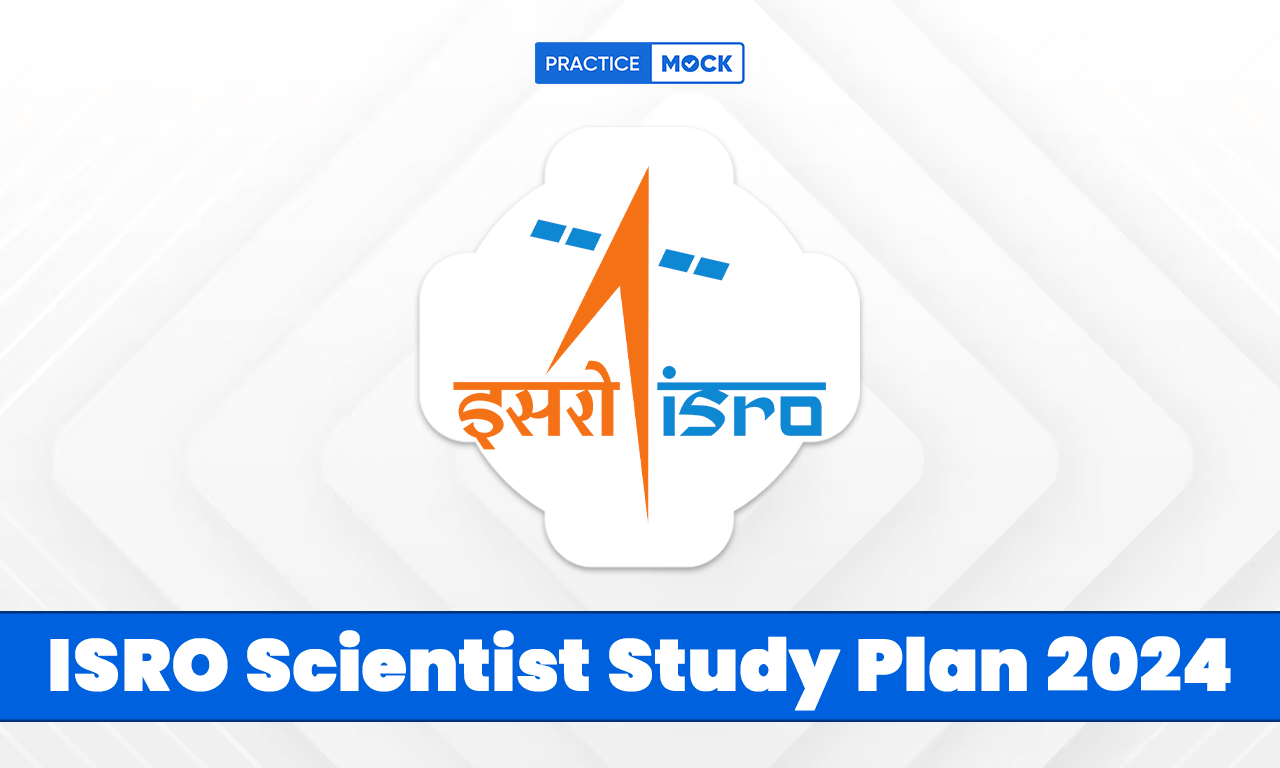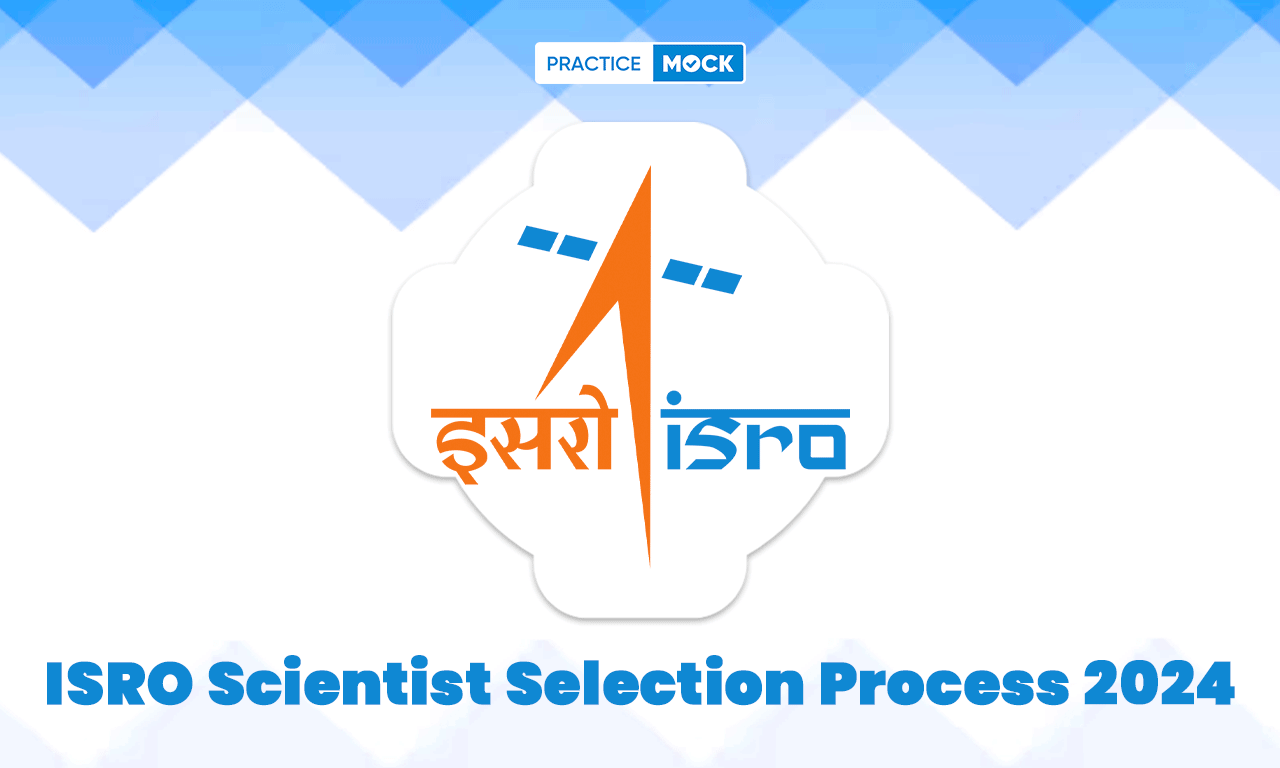ISRO Scientist/Engineer Exam 2023-10 Expected Questions on Finite Element Method


Finite Element Method (FEM) is super important for the ISRO Scientist/Engineer Exam 2023! FEM is like a secret tool that helps us solve problems and make things better. If you’re aiming for the ISRO exam, knowing FEM can give you a big advantage. Do you know why? Because it’s like having a superpower in the field of engineering!
Now, here’s something important! We’ve got a surprise for you! In this blog, there are 10 expected questions on this important topic along with a FREE ISRO scientist/Engineer 2023 mock test waiting for you. Yes, you heard it right! This is your chance to see how much you know and practice for the real exam. So, let’s get started on this exciting journey to understand what FEM is all about and how it can help you maximize your score in the ISRO Scientist/Engineer Exam 2023.
ISRO will conduct the Scientist/Engineer Recruitment 2023 exam on December 17, 2023. The written test for Scientist/Engineer ‘SC’ positions in EMC at ISRO’s Bengaluru location is fast approaching. So, get ready to explore and learn!
Take 1 FREE ISRO Scientist/Engineer Exam 2023 Mock Test & Know How Much You Know About FEM!🏆👈
ISRO Scientist/Engineer Exam 2023-10 Expected Questions on Finite Element Method
Given below are the 10 questions that will help you face every type of question on Finite Element Method in the upcoming exam with full confidence:
- How does the finite element method revolutionize engineering analysis, and what are its key applications?
- Outline the step-by-step process of solving a typical finite element problem.
- In finite element analysis, how does the choice of element type impact accuracy?
- Compare the finite element method with other numerical analysis techniques, elucidating its advantages and limitations.
- Delve into the role of mesh refinement in enhancing finite element simulation accuracy.
- Uncover the factors that drive the convergence of a finite element solution.
- Demystify the application of boundary conditions in finite element analysis.
- Explore the significance of shape functions and their utilization in representing element behavior.
- Probe into stress stiffening’s concept and its relevance in nonlinear finite element analysis.
- How can you validate the precision of a finite element solution? Provide examples.
Grab a FREE ISRO Mock Test & Master All These Topics!👈🏆🤓
Answers:
1. Revolutionizing Engineering Analysis and Key Applications:
The Finite Element Method revolutionizes engineering analysis by breaking down complex problems into simpler, finite-sized elements. These elements are interconnected at nodes, forming a mesh that approximates the behavior of the entire structure. FEM is widely applied in structural mechanics, heat transfer, fluid dynamics, and electromagnetics. It has transformed how engineers analyze structures, predict behaviors, and optimize designs, ensuring efficiency and safety.
2. Solving a Finite Element Problem: Step-by-Step
Solving a finite element problem involves several steps. First, discretize the domain into elements and nodes. Assign material properties and boundary conditions to the elements. Formulate element stiffness matrices and assemble them into a global stiffness matrix. Apply boundary conditions to the global matrix, yielding a reduced system. Solve this system to obtain displacements. Calculate stresses, strains, and other desired quantities based on the obtained displacements.
3. Element Type’s Impact on Accuracy
The choice of element type significantly affects accuracy. Simple elements, like linear triangles, may not capture complex behaviors accurately. Higher-order elements, like quadratic elements, offer better accuracy but require more computational resources. Engineers must strike a balance between accuracy and computational efficiency when selecting element types.
4. Comparing FEM with Other Numerical Techniques
FEM has advantages, such as handling complex geometries and various physical phenomena. However, it requires substantial preprocessing, and the mesh quality influences accuracy. Compared to finite difference and finite volume methods, FEM provides greater flexibility but demands higher computational costs.
5. Role of Mesh Refinement in Accuracy Enhancement
Mesh refinement involves subdividing elements into smaller parts. Finer meshes capture local behaviors better, improving accuracy. However, excessive refinement increases computation time. Engineers must judiciously refine meshes based on the problem’s complexity and requirements.
Grab a FREE ISRO Mock Test & Get Your AIR!
6. Factors Driving Convergence
Convergence occurs when successive iterations yield consistent results. Factors like element size, element type, and solver settings impact convergence. Poorly converged solutions indicate inaccuracies or instability.
7. Application of Boundary Conditions
Boundary conditions simulate the physical constraints applied to a system. They are essential for obtaining realistic results. For instance, in a structural analysis, fixing a certain edge simulates a clamped boundary.
8. Significance of Shape Functions
Shape functions define how displacements vary within an element. They are essential for interpolating values across the element. Linear shape functions capture simple deformations, while higher-order shape functions handle complex deformations.
9. Stress Stiffening in Nonlinear FEA
Stress stiffening accounts for the change in stiffness due to the deformation. In nonlinear analysis, as a structure deforms, its stiffness changes. Stress stiffening ensures an accurate representation of nonlinear behaviors.
10. Validating Finite Element Solutions
Solution validation involves comparing finite element results with known analytical solutions or experimental data. For instance, in a beam bending problem, comparing finite element deflections with theoretical calculations validates the accuracy of the FEM solution.
Take 1 FREE ISRO Scientist/Engineer Exam 2023 Mock Test & Practice Questions on FEM!🏆👈
Conclusion
Aspirants preparing for the ISRO Scientist/Engineer Exam can benefit from mastering the Finite Element Method. This knowledge enables engineers to simulate the behavior of complex structures, predict their response under various conditions, and optimize designs for maximum efficiency and safety. To illustrate the practical applications of the Finite Element Method, let’s consider a scenario where ISRO engineers are designing a satellite’s structural components. By applying FEM, they can analyze the stress distribution, identify potential weak points, and optimize the structure to withstand the harsh conditions of space travel.
In conclusion, the Finite Element Method is a cornerstone of modern engineering analysis. Its applications span various fields, from aerospace to civil engineering. Understanding FEM’s principles, techniques, and limitations can empower aspiring scientists and engineers to excel in their careers, especially in industries where precision and optimization are paramount. As you prepare for the ISRO Scientist/Engineer Exam 2023, mastering FEM could be the key to unlocking your potential in the world of engineering.
Recent Posts
How to Prepare IBPS RRB Clerk 2025 Exam At Home?
Here we are providing some strategy to prepare IBSP RRB Clerk exam at home, check…
Box Based Puzzles for RRB PO 2025, Check How to Solve in 5 Minutes?
In this article, we are providing the Box-Based Puzzles for RRB PO 2025, Candidates can…
Reasoning for SSC CGL Best Preparation Strategy, Download Free PYQs
In this blog, we have provided the questions and topic-wise tests of reasoning for SSC…
Smartest RBI Grade B Exam Preparation Strategy for Phase 1 & 2
Master your RBI Grade B 2025 preparation with the smartest study schedule for Phase 1…
IBPS Clerk Cut Off 2025, Check Previous Year Cutoff Marks
IBPS Clerk Mains Cut Off 2025 will be released on their official website. Candidates can…
RBI Grade B Course 2025, Check Best Online Coaching
Choose the best online courses for RBI Grade B 2025. Improve your preparation with expert…


